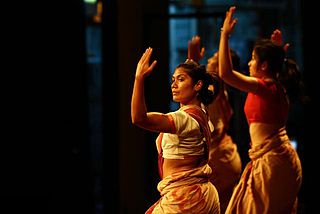♦ SJK (Tamil) Ladang Jawi
♦ SJK (Tamil) Ladang Alma
♦ SJK (Tamil) Ladang Juru
♦ SJK (Tamil) Ladang Malakoff
♦ SJK (Tamil) Ladang Mayfield
♦ SJK (Tamil) Ladang Prye
♦ SJK (Tamil) Ramakrishna
♦ SJK (Tamil) Sungai Ara
♦ SJK (Tamil) Ladang Valdor
♦ SJK (Tamil) Sungai Bakap
♦ SJK (Tamil) Azad
♦ SJK (Tamil) Bayan Lepas
♦ SJK (Tamil) Bukit Mertajam
♦ SJK (Tamil) Ladang Byram
♦ SJK (Tamil) Nibong Tebal
♦ SJK (Tamil) Ladang Changkat
♦ SJK (Tamil) Ladang Sempah
♦ SJK (Tamil) Ladang Krian
♦ SJK (Tamil) Ladang Transkrian
♦ SJK (Tamil) Permatang Tinggi
♦ SJK (Tamil) Palaniandy
♦ SJK (Tamil) Mak Mandin
♦ SJK (Tamil) Perai
♦ SJK (Tamil) Jalan Sungai
♦ SJK (Tamil) Tasik Permai
♦ SJK (Tamil) Ladang Batu Kawan
♦ SJK(Tamil) Perak Sangeetha Sabah, Ipoh
♦ SJK (Tamil) Kerajaan, Jalan Sungai Pari, Ipoh
♦ SJK (Tamil) Ladang Yam Seng, Semanggol
♦ SJK (Tamil) Ladang Changkat Salak, Salak Utara
♦ SJK (Tamil) Ladang Selaba, Teluk Intan
♦ SJK (Tamil) Ladang Jendarata 1, Teluk Intan
♦ SJK (Tamil) Ladang Jendarata 2
♦ SJK (Tamil) Ladang Jendarata 3
♦ SJK (Tamil) Ladang Getah Taiping
♦ SJK (Tamil) Pangkor
♦ SJK (Tamil) Taman Desa Pinji
♦ SJK (Tamil) Kampung Tun Sambanthan, Ayer Tawar
♦ SJK (Tamil) Ladang Ayer Tawar
♦ SJK (Tamil) Ladang Cluny
♦ SJK (Tamil) Ladang Banopdane
♦ SJK (Tamil) Kampung Baru Matang
♦ SJK (Tamil) Ladang Sogomana
♦ SJK (Tamil) Kampong Colombia, Ayer Tawar
♦ SJK (Tamil) Flemington
♦ SJK (Tamil) Bandar Behrang
♦ SJK (Tamil) Batak Rabit
♦ SJK (Tamil) Jebong Lama
♦ SJK (Tamil) Ladang Kota Bahroe
♦ SJK (Tamil) Methodist Malim Nawar
♦ SJK (Tamil) Ladang Gapis
♦ SJK (Tamil) Nova Scotia 2
♦ SJK (Tamil) Ayer Tawar
♦ SJK (Tamil) Tapah
♦ SJK (Tamil) Khir Johari
♦ SJK (Tamil) Tun Sambanthan
♦ SJK (Tamil) Bharathy
♦ SJK (Tamil) Sungkai
♦ SJK (Tamil) Slim River
♦ SJK (Tamil) Slim Village
♦ SJK (Tamil) Tan Sri Dato' Manickavasagam
♦ SJK (Tamil) Tong Wah
♦ SJK (Tamil) Ladang Bidor Tahan
♦ SJK (Tamil) Bikam
♦ SJK (Tamil) Sungai Kruit
♦ SJK (Tamil) Ladang Sunkai
♦ SJK (Tamil) Trolak
♦ SJK (Tamil) Kelapa Bali
♦ SJK (Tamil) Ladang Behrang River
♦ SJK (Tamil) Ladang Katoyang
♦ SJK (Tamil) Ladang Cashwood
♦ SJK (Tamil) Maha Ganesa Viddyasalai
♦ SJK (Tamil) Chettiars
♦ SJK (Tamil) Pengkalan Baru
♦ SJK (Tamil) Ladang Huntly
♦ SJK (Tamil) Ladang Walbrook
♦ SJK (Tamil) Ladang Sungai Wangi 2
♦ SJK (Tamil) Mukim Pundut
♦ SJK (Tamil) Kampung Kayan
♦ SJK (Tamil) Beruas
♦ SJK (Tamil) Tanjong Rambutan
♦ SJK (Tamil) St. Philomena Convent
♦ SJK (Tamil) Perak Sangeetha Sabah
♦ SJK (Tamil) Kampung Simee
♦ SJK (Tamil) Gunong Rapat
♦ SJK (Tamil) Menglembu
♦ SJK (Tamil) Cangkat
♦ SJK (Tamil) Tronoh
♦ SJK (Tamil) Gopeng
♦ SJK (Tamil) Methodist, Buntong Ipoh
♦ SJK (Tamil) Ladang Chemor
♦ SJK (Tamil) Ladang Changkat Kiding
♦ SJK (Tamil) Klebang
♦ SJK (Tamil) Ladang Strathisla
♦ SJK (Tamil) Ladang Kinta Vally
♦ SJK (Tamil) Mambang Diawan
♦ SJK (Tamil) Kampar
♦ SJK (Tamil) Ladang Kampar
♦ SJK (Tamil) Ladang Selinsing
♦ SJK (Tamil) Kuala Kurau
♦ SJK (Tamil) Simpang Lima
♦ SJK (Tamil) Bagan Serai
♦ SJK (Tamil) Saint Mary's
♦ SJK (Tamil) Ladang Sungai Bogak
♦ SJK (Tamil) Ladang Gula
♦ SJK (Tamil) Ladang Chersonese
♦ SJK (Tamil) Ladang Jin Seng
♦ SJK (Tamil) Ladang Soon Lee
♦ SJK (Tamil) Arumugam Pillai
♦ SJK (Tamil) Ladang Kelumpong
♦ SJK (Tamil) Ladang Gedong
♦ SJK (Tamil) Ladang Sungai Biong
♦ SJK (Tamil) Mahathma Gandi Kalasalai
♦ SJK (Tamil) Gandhi Memorial
♦ SJK (Tamil) Ladang Kati
♦ SJK (Tamil) Ladang Gapis
♦ SJK (Tamil) Ladang Perak River Valley
♦ SJK (Tamil) Enggor
♦ SJK (Tamil) Ladang Elphil
♦ SJK (Tamil) Ladang Sungai Reyla
♦ SJK (Tamil) Ladang Dovenby
♦ SJK (Tamil) Thiruvalluvar
♦ SJK (Tamil) Sithambaram Pillay
♦ SJK (Tamil) Ladang Sussex
♦ SJK (Tamil) Netesa Pillay
♦ SJK (Tamil) Ladang Sungai Timah
♦ SJK (Tamil) Ladang Sabrang
♦ SJK (Tamil) Ladang Nova Scotia 1
♦ SJK (Tamil) Ladang Rubana 1
♦ SJK (Tamil) Ladang Teluk Buloh
♦ SJK (Tamil) Ladang Jendarata Bahagian Alpha Bernam
♦ SJK (Tamil) Ladang Flemington
♦ SJK (Tamil) Ladang Teluk Bharu
♦ SJK (Tamil) Ladang Kuala Bernam
♦ SJK (Tamil) Bagan Datoh
♦ SJK (Tamil) Ladang Strathmashie
♦ SJK (Tamil) Ladang New Coconut
♦ SJK (Tamil) Ladang Ulu Bernam 2
♦ SJK (Tamil) ladang Sungai Samak
♦ SJK (Tamil) Ladang Kamatchy
♦ SJK (Tamil) Kamunting
♦ SJK (Tamil) YMHA
♦ SJK (Tamil) St Teresa's Convent
♦ SJK (Tamil) Ulu Sepetang
♦ SJK (Tamil) Selama
♦ SJK (Tamil) Pondok Tanjung
♦ SJK (Tamil) Ladang Holyrood
♦ SJK (Tamil) Ladang Malaya
♦ SJK (Tamil) Ladang Sin Wah
♦ SJK (Tamil) Ladang Lauderdale
♦ SJK (Tamil) Ladang Matang
♦ SJK (Tamil) Kampong Baru
♦ SJK (Tamil) Ladang Allagar
♦ SJK (Tamil) Ladang Temerloh
♦ SJK (Tamil) Ladang Stoughton
♦ SJK (Tamil) Pengkalan Hulu
♦ SJK (Tamil) Gerik
♦ SJK (Tamil) Ladang Kota Lima
♦ SJK (Tamil) Ladang Glenealy
♦ SJK (Tamil) Ladang Serapoh
♦ SJK (Tamil) Ladang Buloh Akar























